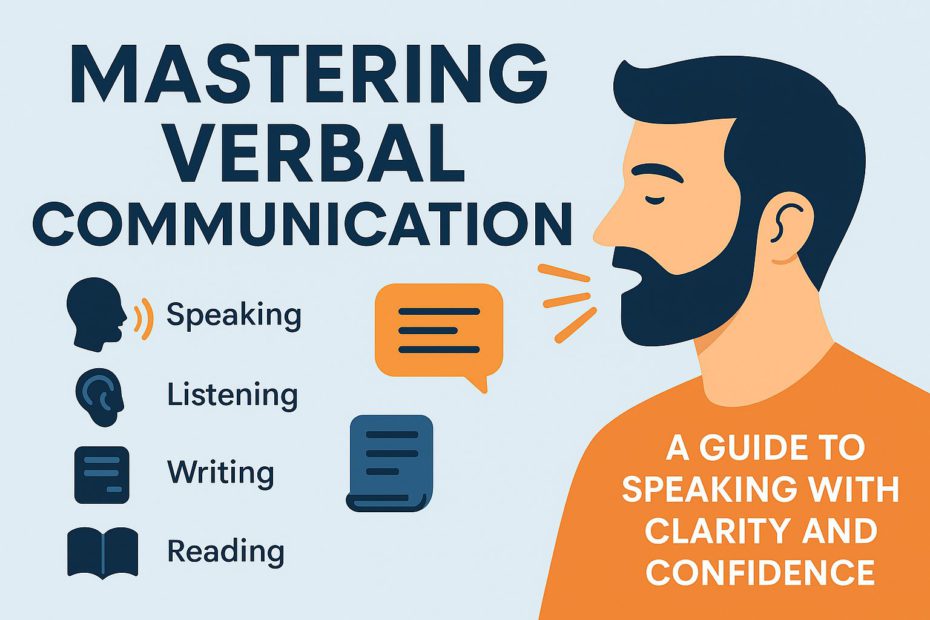Verbal communication is the foundation of how we express thoughts, share information, and build connections with others. From casual conversations to professional presentations, the words we choose and how we deliver them shape the way others understand us.
🔍 What Is Verbal Communication?
At its core, verbal communication is the use of language—spoken or written—to convey a message. Unlike gestures or facial expressions, verbal communication relies on structured language to create clear and meaningful interactions.
It can occur in person, over the phone, through writing, or even via digital tools like video calls and messaging apps.
📚 Forms of Verbal Communication
Verbal communication can take several forms, each important in its own right:
- Spoken Language
This includes in-person dialogues, phone conversations, speeches, and video meetings. - Written Communication
Emails, letters, text messages, blog articles, and reports all fall under this category. - Listening and Responding
Communication is a two-way process—actively listening and responding with understanding are key elements of effective verbal exchange.
✅ Why Verbal Communication Matters
Strong verbal communication helps in nearly every aspect of life:
- Builds stronger relationships
Clear, respectful conversation deepens trust and understanding. - Reduces misunderstandings
Precise wording helps eliminate confusion and promotes accuracy. - Strengthens teamwork
In group settings, effective verbal skills encourage collaboration and problem-solving. - Boosts personal and professional growth
Good communicators often stand out in workplaces, interviews, and leadership roles.
💡 Tips to Improve Verbal Communication
Want to express yourself more clearly? These habits can help:
- Think before you speak: Organize your thoughts to deliver a clearer message.
- Use simple, direct language: Avoid jargon unless your audience understands it.
- Practice active listening: Pay attention, ask follow-ups, and show that you’re engaged.
- Adjust your tone and pace: Match your delivery to your setting—professional, casual, or emotional.
✨ Real-Life Examples
Here are a few common settings where verbal communication plays a major role:
- A student presenting a project to classmates
- A job interview, where tone and word choice matter
- A family discussion over dinner
- A business meeting or sales pitch
- Writing an article, email, or instruction manual
📌 Final Thoughts
Verbal communication isn’t just about talking—it’s about connecting. Whether through spoken words or written language, the ability to express yourself with clarity and confidence can open doors and strengthen your relationships.
No matter your background or profession, improving your verbal communication is an investment in both your personal and professional future.

